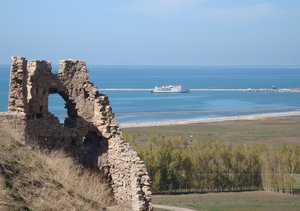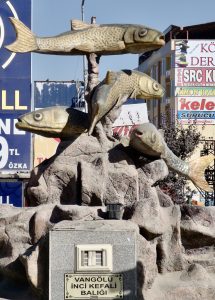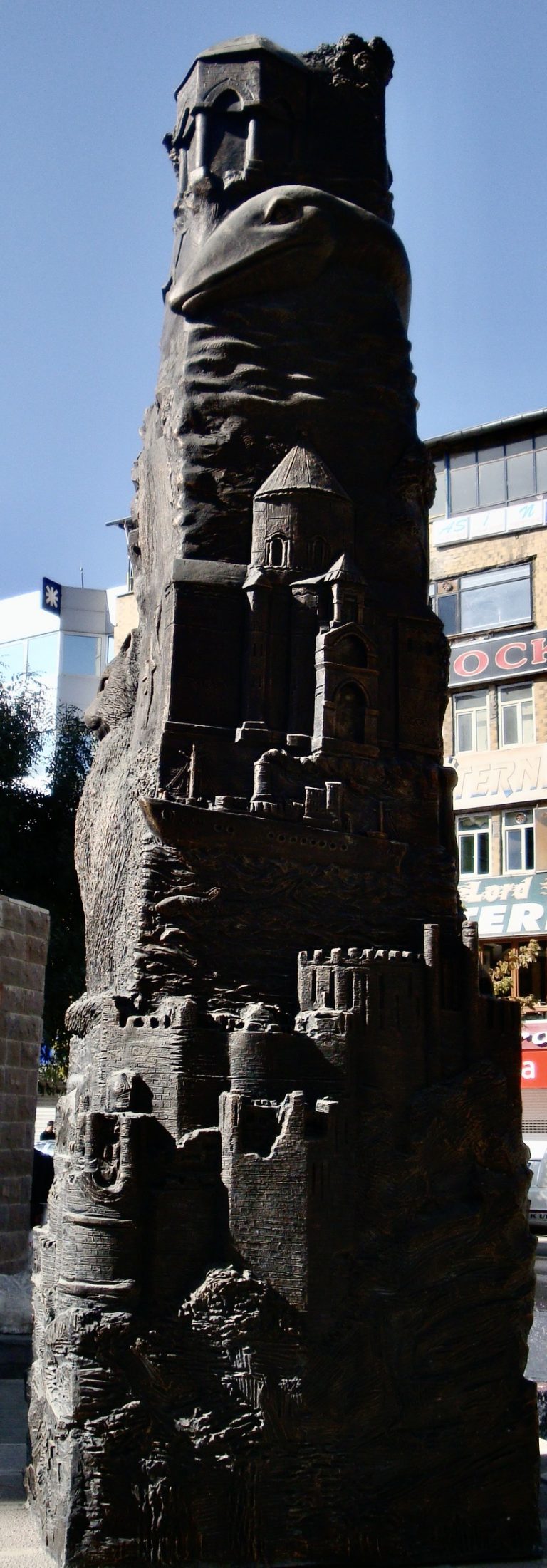Turkey’s largest lake
Other name: Gola Wane (Kurdish)
A brief glance at a map of Eastern Turkey immediately reveals that its most conspicuous feature is Van Gölü (Lake Van), a vast expanse of water that covers 3,712 square km of land strung out between Tatvan to the west and Van to the east. Turkey’s largest lake, it was formed some 6,000 years ago when the volcano that is the lesser known eastern Nemrut Dağı (Mt Nemrut) erupted and hurled the entire top of the mountain into the lake, thereby cutting off the water’s natural escape route into the Murat river and thence into the Euphrates.
On the north shore of the lake, Suphan Dağı (Mt Suphan) soars to 4,058m while to its west Nemrut Dağı reaches 2,948m. Along with the famous Akdamar Island on the south side of the lake, there are other islands on the eastern side, named Çarpanak (Ktuts), Adır(Lim) and Kuş (Arter). All of them retain the ruins of Armenian monasteries; only those on Akdamar have been restored.
The waters of Lake Van are known for being highly alkaline which means that it’s actually possible to wash clothes in them without using soap. Swimmers also find the water extremely buoyant, although pollution around the main population centres means that it’s not really that wise to risk bathing.
Not surprisingly, Lake Van is home to all sorts of unusual beasties, some of them real, others entirely fanciful.
Perhaps its most prized resident is the inci kefalı (Alburnus tarichi, pearl mullet), a fish so revered that it’s spawned commemorative statues not just in Van itself but also in the small town of Erciş. Then there is the Van Canavarı, the Lake Van Monster, a creature uncannily similar to Scotland’s Loch Ness Monster and just as elusive – the closest you’ll come to it is the statue in Van’s Feqiye Teyran Park where a diplodocus-like creature can be seen wrapping its long neck around other local features. It would be easy to run away with the idea that Vannie was just piggy-backing on the fame of Nessie but as early as 1889 and Ottoman newspaper was already suggesting that a monster had dragged a man into the lake.
 Van Lake from the Rock of Van
Van Lake from the Rock of Van
Finally, there’s the Van kedisi (Van cat) which is famous not just for having pure white fur, and one yellow and one blue eye but also for having a particularly un-feline love of water – although you’ll be hard-pressed enough to spot a Van cat about town let alone one that’s out there demonstrating its supposed love of swimming.
To explore all the sights around Lake Van requires several days. The two most obvious bases for doing so are Van itself and smaller and altogether scruffier Tatvan.
The lake in numbers
Circumference: 430km
Width (widest point): 119km
Width (narrowest point):
Length:
Deepest point: 451m
Volume of water: 607 cubic km
Height above sea level: 1,750m
Transport info
The busiest route for public transport round the lake runs south between Tatvan and Van but there is plenty of local transport between the different populations centres too.
The nicest way to explore the lake is to cross it by the ferry that links Tatvan to Van. I hear that it is now operating properly to connect with trains from Ankara several times a day which would certainly be wonderful.
The road south from Gevaş to Bahçesaray has a reputation for being snow-bound right into June in some years.
Places to visit around Lake Van


